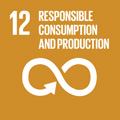- Docente: Giovanni Semprini
- Credits: 8
- SSD: ING-IND/11
- Language: Italian
- Moduli: Giovanni Semprini (Modulo 1) Giovanni Semprini (Modulo 2)
- Teaching Mode: In-person learning (entirely or partially) (Modulo 1); In-person learning (entirely or partially) (Modulo 2)
- Campus: Bologna
-
Corso:
Single cycle degree programme (LMCU) in
Architecture and Building Engineering (cod. 0940)
Also valid for Second cycle degree programme (LM) in Civil Engineering (cod. 0930)
Learning outcomes
the achievement of credits allows to acquire the essential tools to understand and locate the thermo-mechanical plant equipment (heating, ventilation and air conditioning) of a building and in the general of a civil work.
Course contents
The course deals with the various aspects of the
HVAC systems in buildings with particular
focus on: Typologies and design criteria, energy saving
and the use of renewable energy sources according to current national legislation. Starting from the basics of Technical Physics
and Hydraulics (preparatory courses), this course discusses the key issues
related to the design of heating and air-conditioning systems,
and of production of hot water for sanitary purposes. At the end of
the course the student will have a base knowledge to evaluate
different choices for HVAC systems and identify
strategies for energy saving.
A) Thermal Loads and IEQ conditions: thermophysical properties of building
components (thermal transmittance, thermal bridges, thermal
inertia, solar transmission). Calculation of winter and summer thermal loads. Basic concepts on Thermal Comfort:
subjective and objective indices. Indoor air quality. Noise problems.
B) Hydronic heating and cooling Plants: Criteria for the selection and sizing of a heating/cooling system. Terminals: Radiators, convectors, radiant systems. Hydronic pipe systems and schemes. Safety and control equipment. Heat generators. . Chimneys. Thermal power stations.
C) Air-conditioning systems - Criteria for the selection and sizing of AC systems. Winter
and summer air conditioning. Air diffusers and ducts. Air handling units. Filtration systems. Noise problems.
D) Domestic Hor Water production. Design criteria of èpipe network and water storage
E) Energy production from Renewable Energy Sources. Types, technical characteristics, design criteria. Chillers and heat pumps. Solar thermal. Photovoltaic systems.
F) Energy Analysis of building-plant systems. Building energy balance. Energy efficiencies of HVAC plants. Calculation of energy needs and primary energy. Legislation requirements and Energy certification .
Teaching methods
The lectures will provide the basis for the design of air conditioning systems
Course attendance is essential to gain practical knowledge on HVAC design
Students with 8 CFU (Impianti Tecnici Modulo 2) must develop a Design of an HVAC system.
Assessment methods
The final assessment is done through a final exam, on the general program of the course, that ensures the acquisition of knowledge and expected skills.
Students with 8 CFU must deliver their HVAC design before the exam.
Teaching tools
Slides of the lectures
free tools for thermal calculation
Office hours
See the website of Giovanni Semprini
SDGs




This teaching activity contributes to the achievement of the Sustainable Development Goals of the UN 2030 Agenda.
